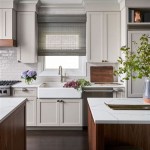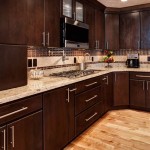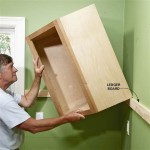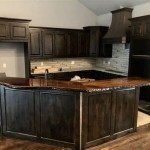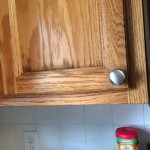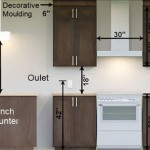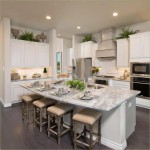The Standard Depth For Kitchen Cabinets: An Essential Guide
When it comes to kitchen renovations, every detail matters. One crucial aspect to consider is the depth of your kitchen cabinets. The standard depth for kitchen cabinets is an important factor that can affect the functionality and aesthetics of your kitchen. In this guide, we will delve into the essential aspects of standard depth for kitchen cabinets, exploring its key considerations and providing valuable insights.
1. Functionality and Storage Capacity:
The depth of your kitchen cabinets directly impacts their storage capacity. Standard depth cabinets, typically measuring 24 inches, offer a generous amount of space for storing kitchen essentials, including cookware, utensils, and pantry items. This depth allows for easy access to items stored in the back of the cabinets, maximizing space utilization.
2. Accessibility and Comfort:
When working in the kitchen, accessibility is paramount. Standard depth cabinets ensure that you can comfortably reach items without straining or bending awkwardly. The 24-inch depth provides ample space for countertops and appliances, creating a comfortable and ergonomic workspace.
3. Countertop Overhang and Aesthetics:
The depth of your kitchen cabinets influences the overhang of your countertops. A standard overhang of 1.5 inches allows for ample space for seating and adds a polished look to your kitchen. This overhang creates a comfortable dining or work area while preventing spills and crumbs from falling behind the cabinets.
4. Cabinet Style and Design:
Standard depth cabinets complement both traditional and modern kitchen designs. They provide a timeless and versatile option that can be paired with various cabinet styles, door designs, and hardware. The 24-inch depth creates a visually balanced look, ensuring your cabinets seamlessly integrate with the overall aesthetic of your kitchen.
5. Appliances and Plumbing:
When planning your kitchen layout, consider the location of appliances and plumbing fixtures. Standard depth cabinets provide sufficient clearance for dishwashers, ovens, and refrigerators, ensuring they fit flush against the cabinets for a clean and cohesive appearance. They also allow ample space for plumbing lines and electrical outlets to run behind the cabinets without compromising functionality.
6. Cost Considerations:
Standard depth cabinets are cost-effective compared to custom-depth cabinets. They are readily available and come in a wide range of styles and finishes to suit any budget. By choosing standard depth cabinets, you can save money while maintaining the functionality and aesthetics of your kitchen.
7. Space Optimization:
For smaller kitchens, standard depth cabinets can maximize space utilization. They allow for more cabinets to be installed along the walls, providing ample storage without overwhelming the space. By choosing standard depth cabinets, you can create a functional and efficient kitchen layout even in compact spaces.
Conclusion:
The standard depth for kitchen cabinets, typically 24 inches, is an essential consideration when designing your kitchen. It offers a balance of functionality, accessibility, aesthetics, and cost-effectiveness. By choosing standard depth cabinets, you can create a kitchen that meets your storage needs, enhances your workspace, and complements the overall design of your home. Remember to consult with a professional kitchen designer to ensure optimal layout and functionality for your specific kitchen space.

N Standard Kitchen Dimensions Renomart

Kitchen Cabinet Sizes What Are Standard Dimensions Of Cabinets

Icymi Kitchen Cabinet Depth Dimensions Kitchencabinetsdimensions Upper Cabinets Wall

Proper Depth For Frameless Cabinets

Helpful Kitchen Cabinet Dimensions Standard For Daily Use Engineering Feed

N Standard Kitchen Dimensions Renomart
Guide To Kitchen Cabinet Sizes And Dimensions

Standard Kitchen Counter Depth Hunker Cabinet Dimensions Cabinets Height

Guide To Master Kitchen Cabinet Dimensions With Ease Waterbuckpump

Kitchen Cabinet Dimensions Size Guide
Related Posts

